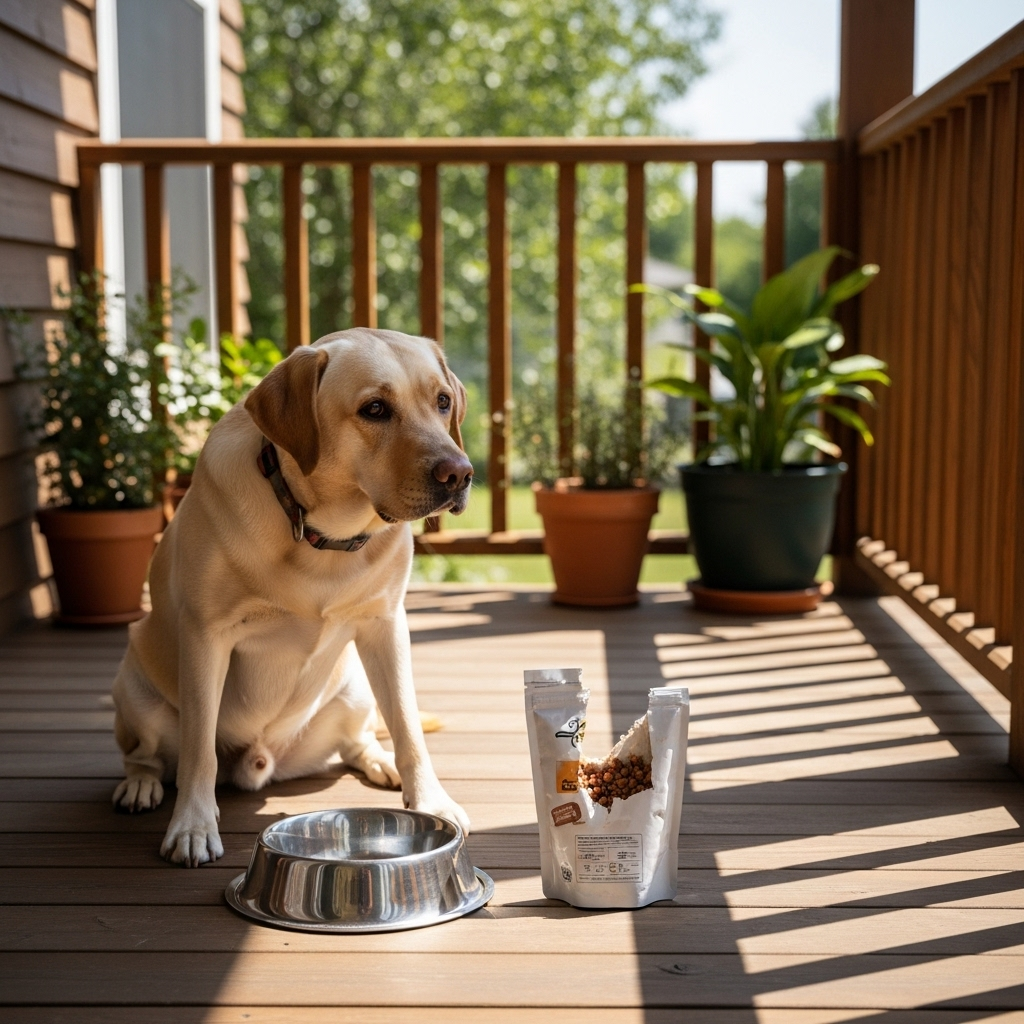Probiotics for Labradors With Sensitive Stomachs

If your Labrador struggles with loose stools, gas, or frequent mild tummy upsets, adding a probiotic to their daily routine can help support digestive balance. This guide explains how probiotics work for dogs, which strains are commonly used for sensitive stomachs, how to introduce them safely, and what to watch for when using probiotics every day.
How probiotics can help a Labrador with a sensitive stomach
Probiotics are live microorganisms that, when given in appropriate amounts, may support a healthy gut microbial community. For Labradors with sensitive stomachs, probiotics can:
- Support digestion and nutrient absorption
- Help maintain a balanced gut microbiome after dietary changes or stress
- Reduce frequency of mild diarrhea or loose stools in some dogs
- Support recovery after short courses of antibiotics (when used correctly)
Common probiotic strains used for dogs
Pet-formulated probiotics typically include strains shown to be safe and useful in animals. Common strains found in quality products for dogs include:
- Enterococcus faecium – frequently used in veterinary formulas
- Lactobacillus species (e.g., L. acidophilus, L. rhamnosus) – often used for general GI support
- Bifidobacterium species (e.g., B. animalis) – may help with stool consistency
- Bacillus coagulans – a spore-forming probiotic that can survive stomach acid
Pet-specific products are formulated with strains and dosages appropriate for dogs. Human probiotics may not contain the same strains or dose levels and are not always ideal for everyday canine use.
Daily use: is it safe and effective?
Many probiotics are designed for daily maintenance and are safe for healthy adult dogs when used as directed. Daily probiotics can be helpful for Labradors prone to mild, ongoing digestive sensitivity. Keep these points in mind:
- Choose a product labeled for dogs with clear dosing instructions by weight or size.
- Start with the manufacturer’s recommended dose, or use a lower amount and increase gradually while monitoring your dog.
- Expect mild changes (a brief increase in gas or softer stools) during the first 7–14 days as the gut adjusts.
- If you see persistent vomiting, bloody stools, severe lethargy, or worsening diarrhea, stop the probiotic and contact your veterinarian immediately.
Dosing guidance (general)
Dose recommendations vary by product. Large-breed dogs like adult Labradors commonly receive products that provide several billion colony forming units (CFU) per day. Follow the product label and your veterinarian’s advice. Avoid exceeding the manufacturer’s recommended dose unless directed by your vet.
How to introduce probiotics to your Labrador
- Pick a canine-specific probiotic with transparent ingredient lists and clear dosing by weight.
- Start at the lower end of the suggested dose for the first 3–7 days to see how your dog tolerates it.
- Mix powdered probiotics into regular food, or give a chewable or capsule as directed.
- Monitor stool quality, appetite, energy, and any signs of intolerance for 1–2 weeks.
- If improvement occurs, maintain the effective daily dose; if not, consult your veterinarian about changing strains or stopping.
When to avoid or be cautious with probiotics
While probiotics are generally safe, take extra caution in these situations:
- Dogs with significant immune suppression or receiving high-dose immunosuppressive drugs — discuss with your vet first.
- Dogs with central venous catheters or severe systemic illness — probiotics may not be appropriate without veterinary oversight.
- If your dog is actively vomiting, has bloody stool, or shows signs of systemic illness, see your veterinarian before giving supplements.
Choosing a product and storage tips
Look for reputable brands that list strains and CFU counts, specify storage (refrigerated vs shelf-stable), and are made for pets. Storage details:
- Refrigerated probiotics: often require refrigeration to maintain potency.
- Shelf-stable/spore-forming products: designed to remain potent at room temperature.
- Always check the expiration date and storage instructions on the label.
Monitoring results and when to see your veterinarian
Give a new daily probiotic 2–4 weeks to assess meaningful changes in stool quality and digestive comfort. Improvements can be gradual; if you see no benefit after 4–6 weeks, talk with your veterinarian about alternatives (different strain combinations, prebiotic support, diet trials, or tests for underlying conditions). Seek immediate veterinary care if your Labrador develops high fever, repeated vomiting, bloody diarrhea, or severe lethargy.
Pros and Cons
| Pros | Cons |
|---|---|
| May improve stool consistency and reduce mild GI upsets | Mild side effects (gas, softer stools) during adjustment |
| Many formulas are safe for daily maintenance | Effectiveness varies by strain and dog; not a cure-all |
| Available in multiple convenient forms (powder, chew, paste) | Some products require refrigeration and can lose potency if stored improperly |
FAQ
Can I give my Labrador human probiotics?
Human probiotics are not formulated for dogs and may contain different strains or doses. While some human products may be safe, it’s best to use a dog-specific probiotic or ask your veterinarian before using a human product daily.
Can probiotics be given during or after antibiotics?
Many veterinarians recommend giving probiotics during and after antibiotics to help restore balance. If used together, give the probiotic a few hours apart from the antibiotic to improve probiotic survival. Check with your vet for product- and antibiotic-specific advice.
How long until I see results?
Some Labradors show improvement in stool consistency within a few days, but it can take 2–6 weeks to see consistent benefits. If there is no improvement after several weeks, consult your veterinarian.
Are probiotics safe for puppies?
Puppies can use probiotics, but choose products formulated for their age and weight and discuss use with your veterinarian, especially for very young or underweight puppies.
Key Takeaways
- Daily probiotics can be a safe, helpful option for many Labradors with mild, ongoing digestive sensitivity.
- Choose a canine-specific product with clear strain and dosage information; follow label directions and your vet’s advice.
- Start with a lower dose, monitor your dog for 1–2 weeks, and allow 4–6 weeks to judge effectiveness.
- Stop and contact your veterinarian if severe GI signs, blood in stool, or systemic illness occur.
- Work with your veterinarian if symptoms persist — probiotics support gut health but don’t replace veterinary evaluation for underlying disease.
Disclaimer
This information is for educational purposes and does not replace veterinary advice. Always consult your veterinarian before starting any supplement, especially if your dog has underlying health conditions, is taking medications, or is a young puppy. Your veterinarian can recommend the best product, dose, and monitoring plan for your Labrador’s specific needs.

Leave a Reply